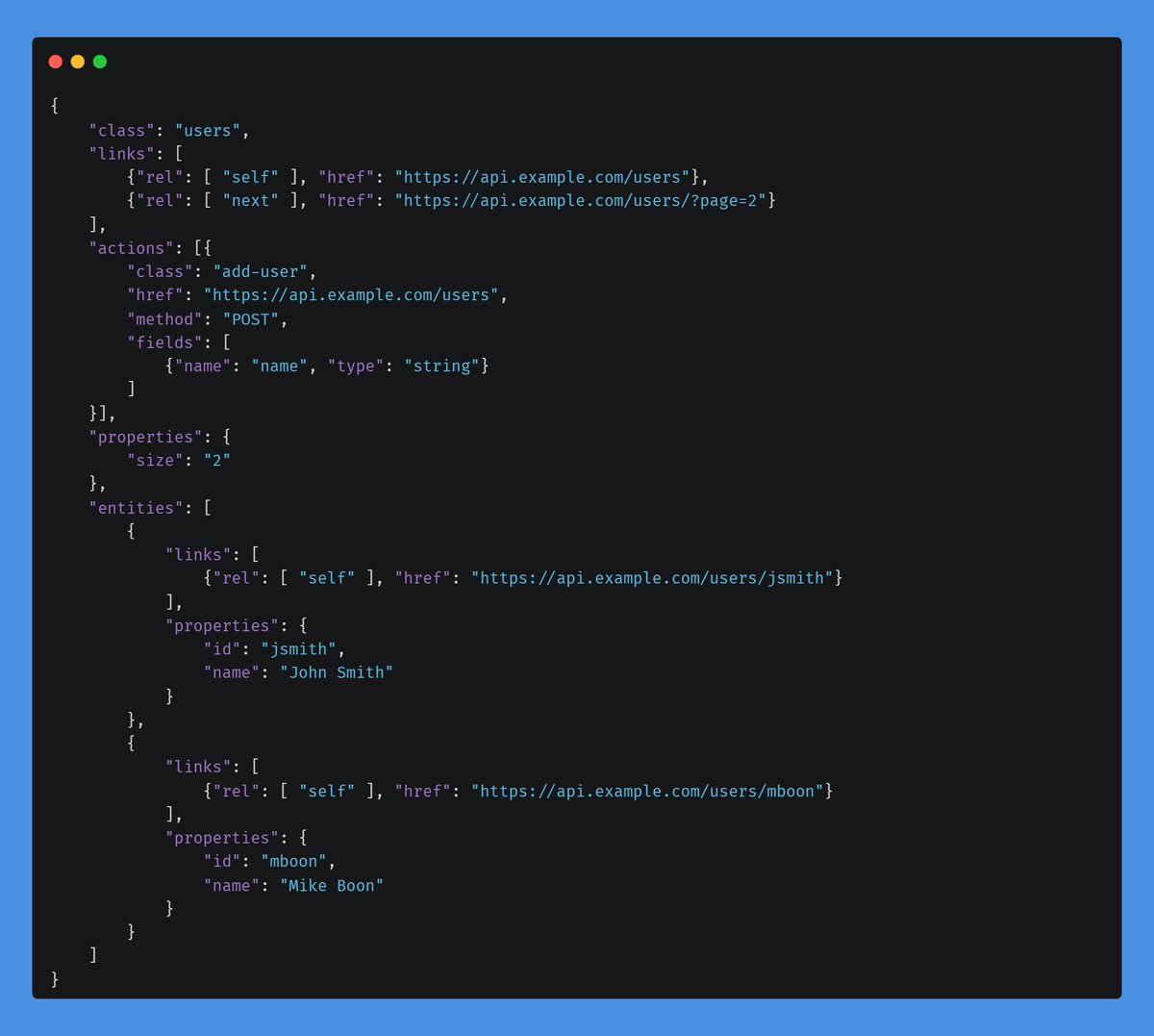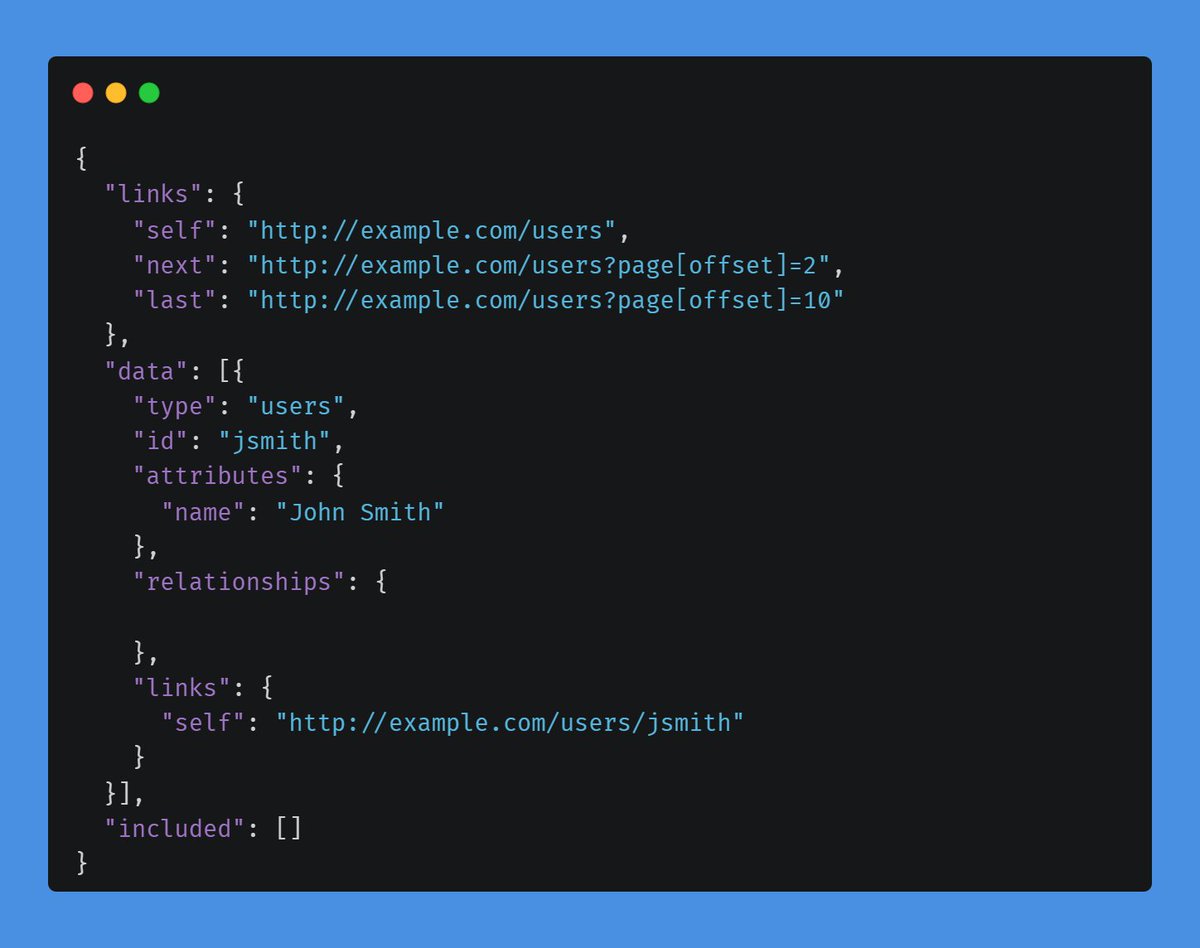Different ways to return a collection from a REST API
Returning a collection of data in a REST API can take various forms, but there are some standards and specifications that help you to take the most out of it. Lets see some examples below:
First start with no standard at all, just returning a list of the resource. Simple to use, but it lacks any information on e.g. total count or paging instructions. Clients can do little with this simple array of elements.

Next up, use hal+json to return an embedded collection with enough meta data so applications can traverse the next sets of data automatically. This standard also provides a nice HATEOAS solution and embedding. https://datatracker.ietf.org/doc/html/draft-kelly-json-hal

The collection+json is a richer standard to query and return data and can also return collections of data next to query for the data. For this standard, look here

We also have JSON+LD which can be used to add meaning to JSON documents and as such also to collections. https://json-ld.org/

The SIREN spec is a hypermedia specification for representing entities with actions for modifying and linking. See the details

More and more populair is JSON:API, which is a specification for how a client should request that resources be fetched or modified, and how a server should respond to those requests. https://jsonapi.org/

So what to pick?
- Use collection+json for a full feature set
- Pick hal+json for its simplicity but still good extensive options
- JSON+LD to extend an existing API
- JSON:API gets a lot of traction, so client support can be good
Most of these specifications have for support for nesting relations, HATEAOS descriptions and templating to name a few. As always; it depends on what your really need to support, so check out the options carefully.





Leave a comment